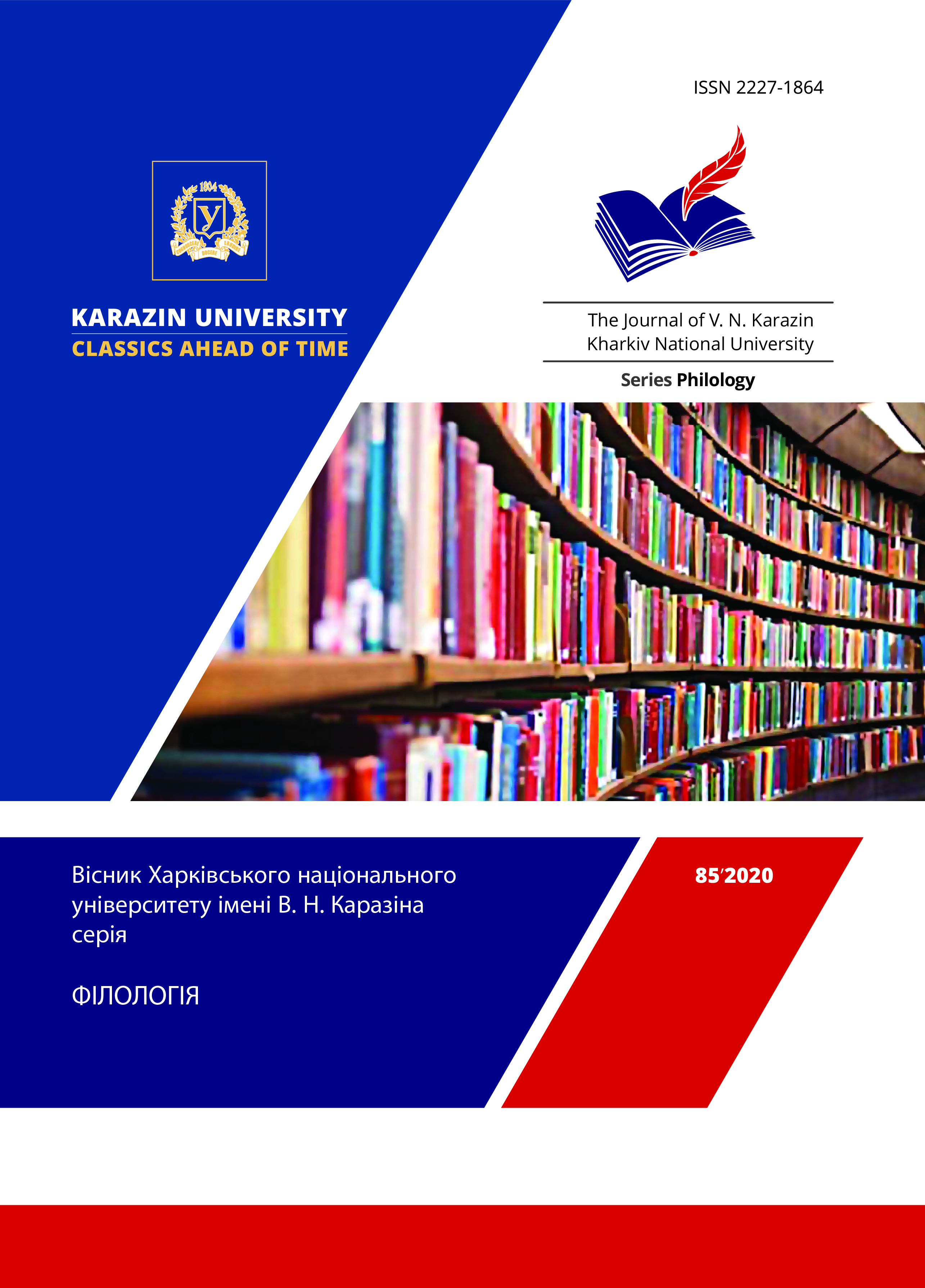Роль міфопоетики у формуванні хронотопу п’єси Л. Андрєєва «Анатема»
Анотація
Проведений у статті аналіз п’єси Л. Андрєєва показує, що продуктивне дослідження поетики розглянутої драми можливе лише в широкому контексті творів: не тільки тих, що складають драматичний цикл за назвою «Бог, дьявол и человек», але й цілої низки новел і повістей Л. Андрєєва, в яких під різними кутами зору інтерпретувалися біблійна історія Іова («Жизнь Василия Фивейского», «Сын человеческий») та євангельська історія Христа та Іуди («Бен-Товит», «Иуда Искариот»). При цьому мова, насамперед, може йти про роль в драмі «Анатэма» інтертексту й іронічного, неортодоксального неоміфологізму.
Відзначено, що в драмі «Анатэма» Л. Андрєєв переважно використовував потужний філософський і міфосимволічний потенціал не закритих, як в п’єсах «Жизнь Человека» і «Черные маски», а відкритих художніх просторів – пустелі й особливо моря, яке стає ідейно-художнім центром драми. При цьому письменник створив об’ємний, багаторівневий хронотоп, у якому розділені воротами місто, з одного боку, і море – з іншого, стають не тільки найбільш символічно значущими просторовими планами, а й сюжетотвірними полюсами.
У статті також доведено, що важливу роль у п’єсі відіграють модерністські принципи та форми зображення: неоміфологізм, інтертекстуальність, мотивність, домінування образів-символів, іронія, гротеск. «Нова драма» Л. Андрєєва вимагала такого типу конфлікту, що відповідає колізії, в якій Людині протистояла би «Стіна» в різних її виявах. У «новому міфі» письменника вона обернулася Роком (Некто в сером). Тому в основу драми «Анатема» був покладений конфлікт «Людина і Рок», втілений в адекватних художніх формах. Для формування неоміфологічного рівня драми автор активно використовував семантичний потенціал ще більш багатозначного, ніж у ранніх п’єсах, хронотопу, інтертекстуальних й автоінтертекстуальних міфосимволічних мотивів, а також метатекстуальні й художні можливості рамкового комплексу й декупажу.
Дослідження хронотопу драм Л. Андрєєва різних періодів творчості, поряд з варіативністю, демонструє його очевидну концептуальну однорідність. Локальні рамки, в які автор переносить дію досліджуваної п’єси (кімната, де проходить Життя Людини) є своєрідним інваріантом просторових варіацій локусів як ранніх драм, так і п’єс «панпсіхе».
Як у прозі, так і в драматургії письменника була відсутня еволюція, хоча змінювалися акценти в авторській концепції та варіювалися відповідні художні засоби і форми зображення. Створена Л. Андрєєвим вже у перших п’єсах оригінальна модель стала інваріантною і лише варіювалася в усіх наступних творах.
Завантаження
Посилання
Andreev L. N. Dramaticheskie proizvedenija : V 2 t. T. 1 / [red. kol. B. F. Egorov, G. A. Lapkina, V. M. Markovich, A. B. Muratov i dr.]. Leningrad: Iskusstvo, 1989. 550 s. Andrew L. N. Dramatic works: In 2 vols. T. 1/ [ed. count B. F. Egorov, G. A. Lapkina, V. M. Markovich, A. B. Muratov and others]. Leningrad: Art, 1989. 550 p.
Boeva G. N. Fenomen Leonida Andreeva i jepoha moderna: pojetika, recepcija, tvorcheskie vzaimosvjazi: avtoref. dis. … doktora filol. nauk: spec. 10.01.01 – «Russkaja literatura». Voronezh, 2017. 40 s.
Gomon A. M. Smehovoj mir Leonida Andreeva: proza 1898–1919 godov: monografija. Har'kov: TO «Jekskljuziv»; NTU «HPI», 2019. 252s.
Chirva Ju. N. O p'esah Leonida Andreeva // Andreev L. N. Dramaticheskie proizvedenija: V 2 t. T.1. Leningrad: Iskusstvo, 1989. S. 3–43.
Chirva Ju. N. Social'no-filosofskaja dramaturgija L. N. Andreeva 1905–1909 godov i problema razvitija dramaturgii konca XIX – nachala HH vekov: avtoref. dis. … kand. filol. nauk: spec. 10.01.01 – «Russkaja literatura». Leningrad, 1973. 26 s.




